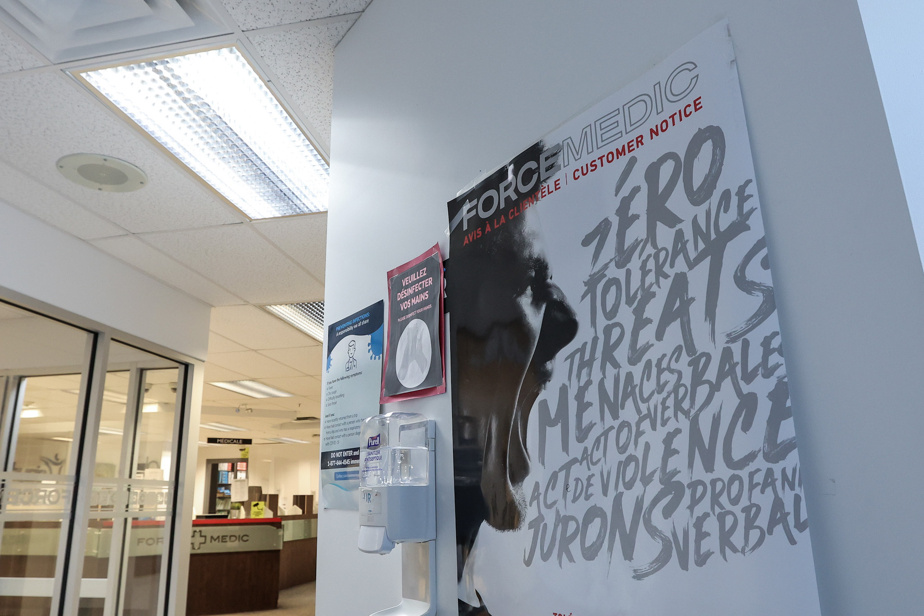Violence is exploding in the healthcare network, with the number of employee victims of events having doubled over the past 10 years. Moreover, it is in the care environment that there are the greatest number of incidents.
The life of Marie*, beneficiary attendant in a CHSLD at the CIUSSS Mauricie-et-du-Centre-du-Québec, was turned upside down on October 7, 2019. During a dinner with the residents, a man suffering from Alzheimer’s and known for his aggressiveness approached her from behind.
“He put his left hand on my chin and his right hand on my neck he forced my head to the left. The patient tried to kill me by breaking my neck,” she recalls. In shock, Marie did not scream. “I quietly slid my fingers between his wrist and my neck and tried to get him to let go. »
The woman was transferred to a hospital where a year and a half of rehabilitation and therapy followed to treat cervical injuries and post-traumatic stress disorder. Even today, she lives with chronic pain. “I feel like my life was stolen from me. I can’t do anything anymore,” she says, choking back her sobs.
The number of employees in the health sector who received compensation from the Commission for Standards, Equity, Health and Safety at Work (CNESST) related to violence suffered at work increased from 933 in 2012 to 1994 in 2021. Almost all of the cases involved assault or violent acts.
“These statistics are disturbing and I believe that the reality is much harsher,” said professor at UQAM’s School of Management Sciences and specialist in emotions and violence in organizations Angelo Soares.
Workers in the health and social assistance sector are by far the most likely to report having experienced workplace violence. They made more than half (55%) of the number of declarations made in Quebec in 2021. The education sector ranks second with 16% of declarations.
These figures probably represent only the tip of the iceberg, believes Professor Angelo Soares. “During a research project, a nurse told me that if she filled out a form each time she experienced an episode of violence at work, she would do just that,” he illustrates.
Health service support staff, such as orderlies and patient service associates, are the most affected by this violence. This group represents 52% of reports made in the health sector in 2021. Nursing professionals follow with 9% of cases.
Administrative officers, responsible in particular for registering patients at the hospital, are also targeted. “Violence against administrative officers has always existed because they are on the front line, but it has really gotten worse with the pandemic. It can go as far as death threats, blows in the window, it goes a long way, ”observes the communications manager of the union of workers of the CISSS des Laurentides, Valérie Lapensée.
The problem is widespread across the province. “In the emergency rooms of the Joliette and Pierre-Le Gardeur hospitals, we have recorded around a hundred cases of violence in the past year,” said the president of the CISSS de Lanaudière workers’ union, Simon Deschênes.
In Quebec, assaults are the main cause of reporting accidents at work, argues the head of the union of workers of the CIUSSS of the Capitale-Nationale, Jean-Renaud Caron. Posters reminding users to be respectful with staff are also making their way into Quebec hospitals.
Professor Angelo Soares notes that some of this violence is caused by people with psychiatric or cognitive disorders, such as dementia. “But that’s far from everyone and you have to remember that the majority of people who have mental health issues aren’t violent,” he says.
The state of the health care system, including “the many hours of waiting”, accentuates this violence towards the nursing staff, estimates the professor of psychology of work and organizations at the University of Montreal Luc Brunet.
Since the number of cases of violence has been steadily increasing for the past decade, “it means that prevention measures are not working”, argues Professor Angelo Soares. “The employer is responsible under the law to provide a healthy workplace. He’s not capable of providing that,” he said.
Called to react, the Ministry of Health and Social Services (MSSS) indicated that the management of the prevention of accidents at work is rather the responsibility of each establishment. However, it says it makes available various training courses relating to civility, harassment and violence, in particular through the Joint Association for Occupational Health and Safety in the Social Affairs Sector (ASSTSAS).
However, Valérie Lapensée regrets that the training offered by ASSTSAS is difficult to access for workers. “This training is given less and less, because the lack of personnel means that we are not able to release people for four days so that they can follow it”, she underlines.
For its part, the CISSS des Laurentides indicated that it had implemented a new pilot training program in September 2022 on the prevention and intervention during violent behavior designed for smaller groups and broken down into different sessions to offer more flexibility.
“It worries us a lot because we don’t have the luxury of losing workers in the midst of a staff shortage,” said Réjean Leclerc, president of the FSSS-CSN. He would like there to be more prevention with health personnel and that messages be sent to the population. “The government needs to make it clear that violence is not tolerated. »

